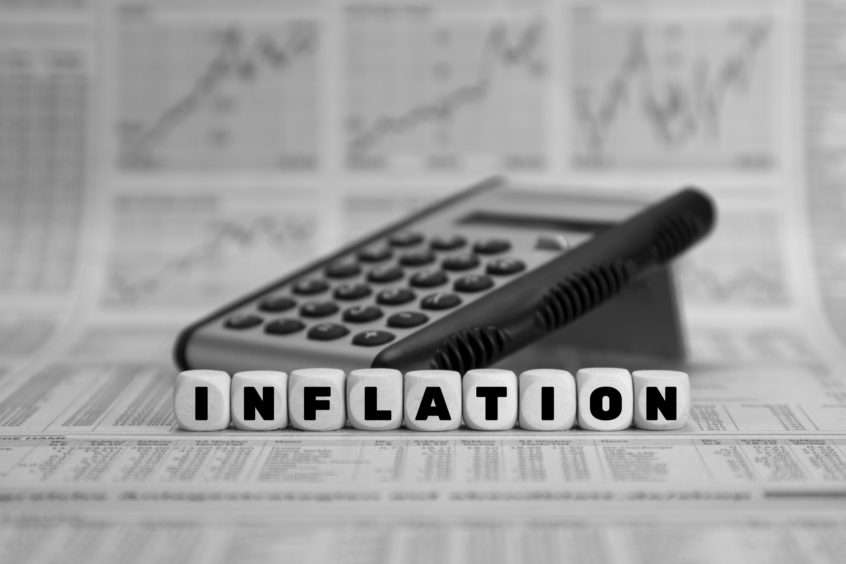With 2022 now well underway, US inflation rates are climbing to levels we haven’t seen in nearly 40 years – currently hovering around seven percent with the expectation that they will continue rising. One of the biggest concerns people have are the ramifications that inflation might bestow on their nest eggs and investments.
Naturally, inflation can and will affect your holdings in assets like real estate, stock and bonds, along with other securities in a variety of ways that can profoundly impact purchasing power, return on investment rates, and even what actions the government takes.
What is inflation, and how does it happen?
In a nutshell, inflation is an overall rise in prices of goods and services that corresponds with a decline in the value of money. The major causes typically involve a disproportionate balance in supply and demand, rising production costs (like raw materials and wages), increased money supply, or currency devaluation.
This time around, inflation was prompted by the supply chain’s inability to meet growing demands for goods and services, along with the Fed’s printing of over $13 trillion in new money (About 80 percent of all US dollars in existence were printed in the last 22-24 months). As one might expect, both of these causes are consequences of the COVID-19 pandemic.
“The committee is of a mind to raise the federal funds rate at the March meeting assuming that the conditions are appropriate for doing so,” says Fed Chairman Jerome Powell.
Effects on Investments
As rising prices outpace the dollar’s value, returns on investments are among the first financial facets to be affected. For example, if an investment generated a five percent return over a one-year period, but the average inflation rate was 1.5 percent in that same timespan, the adjusted Return on Investment would actually be 3.5 percent (this excludes factors like taxes, which will further reduce Return-on-Investment value).
For example, let’s say you have an IRA with $100,000 in it. Let’s say your IRA’s Return on Investment was five percent over 12 months, giving you a cumulative return of $5,000. When factoring in that aforementioned 1.5 percent inflation rate, which would reduce your Return on Investment to 3.5%, the actual value of your return would be $3,500 – a 30 percent reduction in the gross return (as 1.5% is roughly 30% of 5%).
Since the cost of goods and currency value travel in opposite directions, a fixed amount of money beforehand, won’t go as far during inflation. Think about how far $10 went in 1970, compared to the 2020s. The average cost for one gallon of gas in 1970 for example, was around 30-36 cents, so $10 could easily fill up your car with plenty to spare. Nowadays, you’d be lucky if that amount covers two gallons. In 1970, $10 would cover two baseball game tickets, food, drinks, and still leave you with one or two dollars. In this day and age, $10 might not even purchase a single hot dog or alcoholic beverage at a pro-sports venue.
Governments primarily fight inflation by adjusting interest rates. The logic behind this approach is that higher interest rates attract savers who then stash more money in interest yielding accounts which reduces the amount of money in circulation, which in theory should cause prices of goods and services to fall. Rising interest rates make it more expensive to borrow money however, lowering demands for housing purchases, high-priced items like cars, and even loans for college tuition or starting a business.
Other approaches governments may take involve wage and price controls, decreasing bond prices, or tapping into bank money reserves (that banks are legally required to have so they can cover account withdrawals). The downsides of these potential solutions however, may outweigh their benefits by resulting in job loss, recession, supply shortages and rationing, or even prompt the formation of illegal markets.
What Lies Ahead
Depending on who you ask, most governmental and financial entities are forecasting rate hikes in 2022, but the exact number varies. While some institutions only anticipate one or two, others fear this year could see up to seven. These projections come in spite of the Fed reducing their GDP growth forecast from 4 – 3.5 percent (due to supply and demand constraints).
“This is going to be a year in which we move steadily away from the very highly accommodative monetary policy we put in place to deal with the pandemic,” says Powell, who mentioned that inflation “has not gotten better. It has probably gotten a bit worse…To the extent that situation deteriorates further, our policy will have to reflect that.”
In addition to employment rates lowering faster than expected, the supply chain disarray isn’t expected to wane any time soon – meaning inflation will persist, and likely impact 2023 growth projections.
Have questions? Our team of Specialists are on standby to help you plan for your specific situation. Call 888.703.2206 today!
Sources:
http://www.library-messages.com/bf8cee68-cd7d-4c5a-a521-b6a31e10867e/resource-center/investment/inflation-and-your-money
https://www.thebalance.com/what-is-inflation-357610
https://tradingeconomics.com/united-states/inflation-cpi
https://www.bls.gov/news.release/cpi.nr0.htm
https://www.businessinsider.com/causes-of-inflation
https://www.investopedia.com/ask/answers/111314/what-causes-inflation-and-does-anyone-gain-it.asp#:~:text=Key%20Takeaways-,Inflation%20is%20a%20measure%20of%20the%20rate%20of%20rising%20prices,pay%20more%20for%20the%20product.
https://www.nasdaq.com/articles/money-printing-and-inflation%3A-covid-cryptocurrencies-and-more
https://www.investopedia.com/ask/answers/111314/what-methods-can-government-use-control-inflation.asp
https://www.marketwatch.com/story/federal-reserve-seen-as-hiking-interest-rates-seven-times-by-25bps-each-in-2022-or-once-at-every-meeting-bofa-says-11643386065
https://www.reuters.com/business/finance/inflation-fighting-fed-likely-flag-march-interest-rate-hike-2022-01-26/

